Of the many International Labour Organization conferences he has attended, the most recent one last year stands out for Filipino businessman Jesus B Varela. Throughout his stay in Geneva, delegates approached him to convey congratulations and best wishes to the Philippines.
“They were all optimistic about the country,” he recalls. “It was the first time I experienced anything like that.” Varela is the Intellectual Property Committee chair of the Philippine Chamber of Commerce and Industry (PCCI), the country’s largest business organisation.
The world had just watched as the Philippines held its first automated elections and delivered a landslide victory to Benigno Aquino III, son of well-known figures of democracy.
The rise of the populist president, in what is considered one of the most credible and peaceful polls, rekindled hopes for genuine reform and progress.
On his inauguration into office on June 30 last year, the new President pledged “to make our country attractive to investors”. In his inaugural address, he promised to cut red tape and improve infrastructure – two major concerns of the private sector.
“We will level the playing field for investors and make government an enabler, not a hindrance to business. That is the only means by which we can provide jobs to our people,” Aquino said.
There has since been a stream of good news about the economy, largely attributed to the positive political situation.
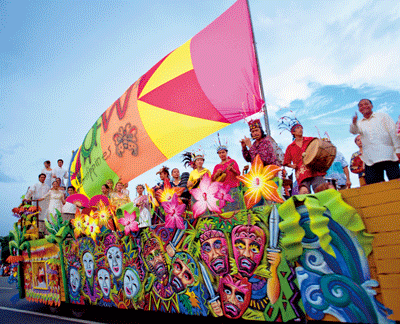
THE AMAZING RAISE
Elections, as they signal change, generally boost confidence levels in the business sector. With Aquino’s approval and trust ratings averaging 80 percent in his first four months, however, it is more so the case, according to Edgardo G Lacson, president of the Employers Confederation of the Philippines. “Domestic investors are more active, international investors are looking at the Philippines,” he says, adding that prospects for the country are “very bright”.
In August, foreign direct investments rose to US$80 million, from only US$10 million during the same period the previous year. The Philippines’ Central Bank attributed this to positive domestic economic developments, including a 7.9 percent growth in GDP in the second quarter. Although the figure slipped slightly (7.5 percent) in the third quarter, Economic Planning Secretary Cayetano Paderanga noted it was still higher than those of Indonesia (5.8 percent), Malaysia (5.3 percent) and South Korea (0.7 percent). The Board of Investments projected that by end-2010, foreign investments would reach PHP300 billion (US$6.8 billion), well over the PHP287-billion (US$6.5 billion) target.
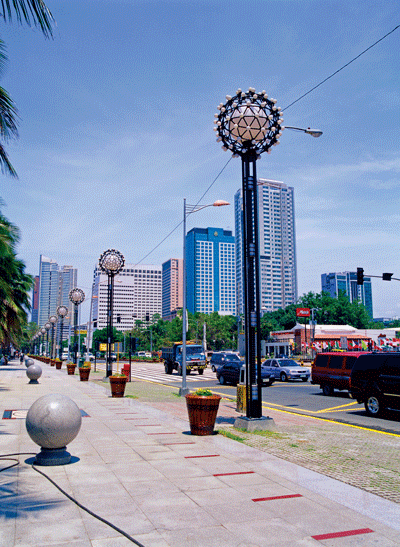
Public attention shifted momentarily to security concerns in the wake of the bungled rescue of Hong Kong tourists taken hostage in Manila in August, followed by the travel advisories issued by several countries (some of which have since been modified).
“The hostage tragedy was unfortunate and could have been handled better, and the travel advisories were not helpful, but I do not foresee any long-term negative influence as we move into 2011,” says Henry J Schumacher, executive vice-president of the European Chamber of Commerce of the Philippines (ECCP).
In fact, business confidence in the country hit an all-time high in the fourth quarter, according to the Central Bank’s Business Expectations Survey conducted from October 1 to November 9. The confidence index rose to 50.6 percent from 45 percent the previous quarter, spurred by increases in remittances of overseas Filipino workers and higher capital inflows, the survey showed. Foreign portfolio investment increased 587 percent to US$2.5 billion in the first 10 months of 2010, from US$358 million during the same period in 2009.
CLEANING UP THE ACT
The upbeat mood carried over to mid-November as some 500 foreign fund managers and local investors gathered at the two-day Infrastructure Philippines 2010 Conference to launch the Aquino administration’s public-private partnership programme, or PPP. The programme seeks to raise US$3.4 billion worth of investments in infrastructure. The president unveiled 10 priority projects, including roads, ports, airports, bridges, to be put out to tender in 2011.
Addressing a common concern of foreign businesses operating in the Philippines, Aquino guaranteed “clean, honest, and transparent” contracting transactions. He assured investors that the government would protect them against the risk of being unable to recoup investments due to regulatory changes.
Investors responded positively. “It’s a great start,” John Forbes, senior adviser of the Investment Climate Improvement Project of the American Chamber of Commerce, was quoted in news reports as saying. Although he noted that it was still a long way to the contracts, he acknowledged that the government was “serious about PPP”.
For Elmer San Pascual, spokesperson of the Philippine Economic Zone Authority, which promotes foreign investments and generates exports, what encourages investors is that not only is the new administration unfettered by governance issues, “we also have the president himself acting as guarantor”.
The business community is, in fact, one with him in his efforts to reduce corruption, if not eliminate it. The ECCP and the Makati Business Club launched late last year, Integrity Initiative, a four-year campaign aimed at ensuring companies commit to ethical business policies. “We have drafted guidelines, and suppliers and contractors are instructed not to engage in corrupt practices. The idea is to make them aware that everybody’s watching,” says Lacson.
JOINT EFFORTS
More than 200 local and foreign companies have signed an Integrity Pledge, which involves key responsibilities. Explains Schumacher: “The CEO must not only walk the talk, but also ensure that tools and control mechanisms are implemented and staff work together in ‘Integrity Circles.’”
The next step is enjoining government to join the campaign, and Schumacher is “positive that this will happen”.
Shortly before the change in administration, Joint Foreign Chambers of Commerce in the Philippines also presented a recommendation to the government identifying seven sectors with high growth potential for investments and employment. These are infrastructure, agro-industrial development, information technology (IT) and business process outsourcing (BPO), creative industries, mining, manufacturing, logistics and tourism.
The goal of the joint chambers, representing some 1,700 multinational companies, is to raise US$75 billion in investment and create 10 million jobs over the next 10 years.
A year hence, manufacturing is on the upswing and is expected to grow further, with the electronics and semiconductor sector recovering from the global financial crisis. The IT/BPO sector remains a sunshine industry, with the jobs seen to double to one million and service exports (now at US$8 billion) growing even faster.
The Philippines is now the world leader in BPO. IBM’s Global Locations Trend Annual Report released in late November said: “The Philippines has taken over the lead in the global ranking from India.” The industry employs more than half a million Filipinos, 70 percent of whom are in call centres. This sector was expected to post revenues reaching US$5.7 billion by end-2010, or US$.2 billion more than that of India, according to the Contract Center Association of the Philippines.
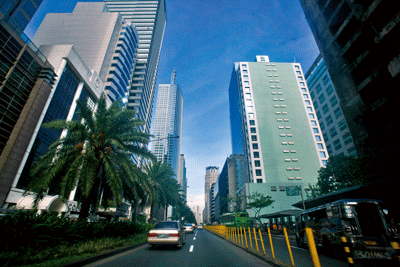
Mining prospects look good, with domestic investors taking the lead. “The Philippines is, after all, the fifth most mineralised country in the world,” says Lacson.
Following the PPP launch, the Department of Agriculture reported that an additional PHP44 billion (US$1 billion) worth of irrigation, hydro-power ventures had been crafted in response to the interest expressed by local and foreign investors. This is on top of the PHP51 billion (US$1.16 billion) worth of projects presented during the conference.
THE SKY IS THE LIMIT
Tourism also received a boost. Of the 10 priority PPP projects, four are airport terminals in Palawan, Bohol and Albay provinces and Cagayan de Oro City – “high-priority tourism destinations”, according to Tourism Secretary Alberto A Lim.
He was pleased that the president picked the investors’ conference to announce that the government would further liberalise civil aviation to increase tourist arrivals, starting with “pocket open skies”.
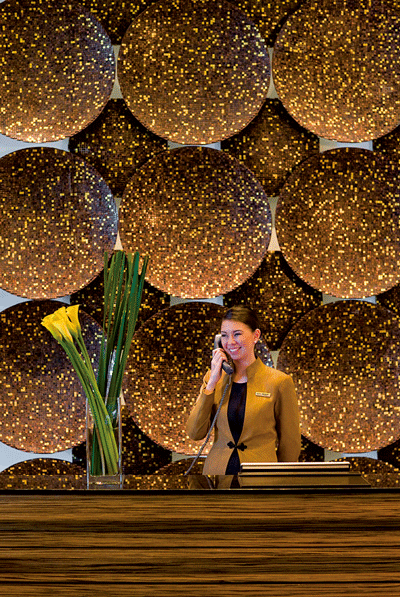
Calling it his “personal advocacy,” Lim explains that the open skies policy “will enlarge the market and will be good for the industry and the economy.” He cited Cebu Pacific Airways, the Philippines’ second flag carrier, which emerged following the adoption of open skies policy in the early 1990s during former President Fidel Ramos’s term. Thanks to more affordable airfares, more Filipinos who never imagined they would be able to travel are now doing so.
At present, the Philippines is served by 770 flights per week (360 of which are by foreign carriers) – a far cry, Lim notes, from Singapore’s 2,390 and Thailand’s 2,065. Some three million tourists visit the Philippines annually, but it is one million less than Vietnam, which started its tourism industry two decades later, he also laments. With open skies policy, though, he hopes rightful adjustments will be seen. “We will let the market determine the appropriate number of flights and not rely on government to dictate the level of supply,” he says.
He also reports that the government is resolving the legal issues surrounding the Ninoy Aquino International Airport Terminal 3 based on “fair compensation”, and that by June 2011, it will be open to two international airlines. (Currently, Cebu Pacific uses it for its international flights.) Terminal 1, meanwhile, will undergo repairs and refurbishing.
HEALTHY OUTLOOK
On the long-term, the government is also looking to develop medical and wellness/retirement tourism.
“By 2050, one-fourth of the world population will be above age 65,” Lim quotes from a study to highlight the Philippines’ strong potential in this sector. “The Philippines is a welcoming environment,” he says while ticking off the country’s other advantages: warm weather, telecommunications access, religious tolerance, world-class spa and wellness resorts and medical centres using state-of-the-art facilities and offering surgical procedures at a fraction of the cost in Western countries.
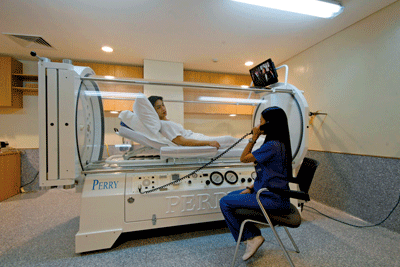
Filipino doctors, nurses, and caregivers are recognised worldwide for their competence and compassion. Foreign companies operating in the Philippines cite the well-trained, English-speaking work force as the country’s best asset.
All these plans conjure the image of a Filipino household in a flurry of activity in expectation of company. With the developed world looking at Asia as a key driver of growth of the world economy, the Philippines is priming itself to get a piece of the action. Those well-wishers Varela met in Geneva should see the country.
NEIGHBOURHOOD WATCH
Addressing foreigners’ security concerns, Philippine Tourism Secretary Alberto A Lim reports that the tourism department, in partnership with the National Police, is reviving a programme dubbed “Top Cop”, for “tourism-oriented police, community-oriented protection”. This involves fielding bicycle-riding law enforcers for greater police visibility and speedier response.
He has also proposed to the Supreme Court the setting up of 24-hour courts that would handle cases involving tourists in high-tourism areas like Metro Manila and Cebu. Chief Justice Renato Corona is studying the proposal.
This is part of the greater plan to rehabilitate Intramuros, or Manila’s old Walled City, and the nearby Rizal Park, a traditional family recreational centre that has deteriorated into a haven for vagrants and petty thieves.
“For starters, we will clean up the area so that we can attract property developers to put up office buildings and open retail establishments,” he says. Up for restoration is a fountain at Rizal Park donated by Germany in the 1960s as a remembrance of national hero Dr. Jose Rizal, who used to drink from it during his student days at the University of Heidelberg.
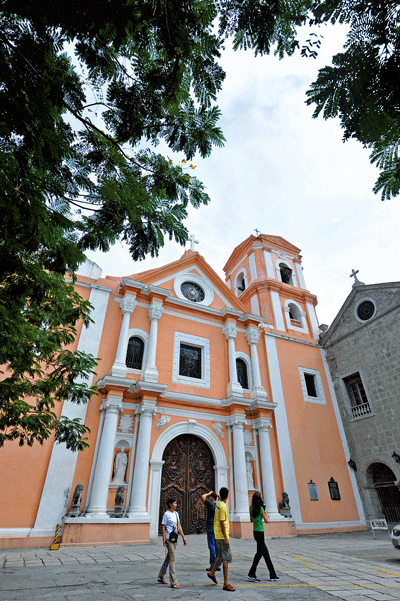
Also in the drawing boards is the reconstruction of the historic San Ignacio Church in Intramuros and its transformation into a museum of ecclesiastical art. Former Central Bank governor Jaime C Laya, a known art collector, has turned over Catholic antiques and artefacts to the Intramuros administration, which will manage what will be known as the Museo de Intramuros.
WHERE TO STAY
MANILA
Marriott Manila
This full-feature five-star international hotel is located within the 7.8-hectare Resorts World Manila, a 24-hour entertainment facility housing the country’s largest casino. The complex faces the newest airport terminal and is only 15 minutes from the Makati CBD. The hotel, which has 342 rooms and all the expected amenities, including Quan spa, is situated next to the Villamor Golf Course, making it ideal for both leisure and business travellers. Mid-January weekend rate at a deluxe room starts from US$170 per night through the hotel’s website.
10 Newport Blvd, Pasay City,
+632 988 9999
www.marriott.com/hotels/travel/mnlap-manila-marriott-hotel/
Microtel Mall of Asia Manila
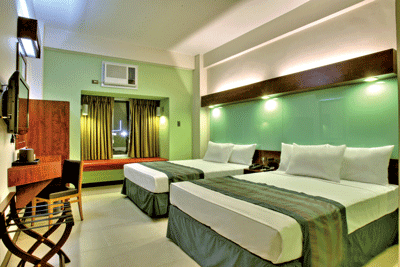
Barely half a year old, this property, belonging to the Microtel group, fills the demand for cost-efficient accommodation for business and leisure travellers. It is conveniently located within the sprawling SM Mall of Asia complex, one of the world’s largest, only minutes from the Makati CBD and the international airport. It has 150 rooms, each featuring amenities like chiropractor-approved mattresses. A double city view room starts from PHP3,247.86 (US$74.17) through online booking in mid January. SM Mall of Asia Complex, Pasay City, +632 403 3333,
St Giles Hotel, Makati, Metro Manila
Opened in July 2010, this well located property is part of a larger chain that also has facilities in London and New York. The décor of the rooms of this St Giles are streamlined, but they have all the mod cons that travellers could expect. The 24-hour restaurant and room service make sure that you never go hungry, and the swimming pool, pool bar and gymnasium have also just opened. The rate for a superior room in January and February is US$57, and discounts apply for booking more nights. Modest fees (US$6 to US$8) are charged for the internet, breakfast, early check-in and late check-out.
Makati Avenue corner Kalayaan Avenue, Makati City, +632 988 9888
CEBU AND BOHOL
Eskaya Beach Resort and Spa
Nestled in 16 hectares of lush tropical gardens on Panglao island, Bohol, in central Philippines, this exclusive resort has 15 private villas. Named after the only known indigenous people in Bohol province, the resort boasts of modern amenities like private whirlpools, built into traditionally Filipino-designed “balai” that use indigenous materials like bamboo, cogon and food for finishing. The resort is a member of the Conde Nast Johansens Luxury Spas portfolio. Various packages are on offer, including, at press time, a five-day, four-night on in a whirlpool bath villa for two at US$1,900 plus government tax.
Barangay Tawala, Panglao, Bohol, +6338 502 9516; Manila tel +632) 576 3051
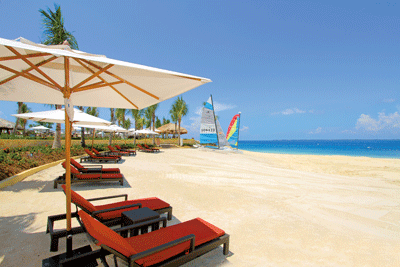
Abaca Boutique Resort
Contemporary Filipino heritage is the design concept for this boutique resort with six deluxe suites and three villas. The suites range in size from 65sqm to 75sqm, and the villas, from 110sqm to 123sqm. The rooms, which use classic wood and stone architecture, copper lighting, antique pieces, are situated in a half-hectare landscaped garden in Punta Engaño, Mactan island, Cebu in central Philippines. The master oceanfront suite is offered for PHP14,900 (US$340.26) plus tax.
+6332 495 3461
Crimson Resort and Spa Mactan
This 4.5-star hotel is located on a private beach in Lapu Lapu City, Cebu. It has a full-service spa, a health club, outdoor pool, steam room and sauna. Business amenities include small meeting rooms, audiovisual equipment and technology support staff. A 3390-sqm event space consists of a ballroom, conference/meeting rooms and banquet facilities. All guest rooms are non-smoking rooms. The internet rate for a deluxe room in mid-January is PHP6,500 (US$148.44) per night.
+6332 401 9999/9998
Manila tel +632 728 0005
KNOW THE CULTURE
While Westerners will call a spade a spade, Filipinos and most Asians have a roundabout way of saying what they mean. They tend to be too shy to “no,” so they say “yes” or “maybe”, and end up not doing what they agreed to do. Foreigners will have to read the body language and infer meaning from voice inflection.
Work style in the Philippines is more flexible and relaxed. Usually there is piped-in music in offices and staff pause to chat with one another. A foreign manager has found that being visible is an effective way to get things done on time.
Filipinos take everything personally, especially a supervisor’s comment about work performance, whether good or bad.








